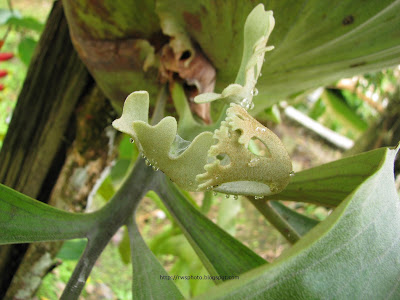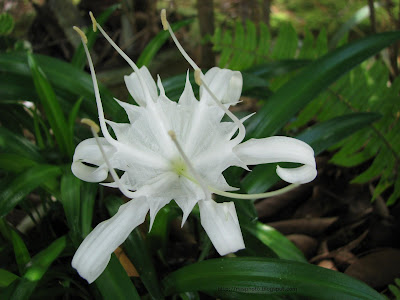Below is a photo collection of tropical Malaysian Common Huntsman spiders (Heteropoda sp.). Huntsmen do not build webs but forage for food - mostly insects and other invertebrates.
The photos are of a female Huntsman with a pouch (egg sac) full of little offspring (tiny baby spiders huh).

#1. Spider offspring dashing out from their mother's pouch

#2. Spider offspring dashing out from their mother's pouch

#3. Notice the tiny little spider (almost colourless) dangling on it's mother leg

#4. Little spider scramble to spin some tiny web.
About Huntsman Spider
Huntsman spiders are large, long-legged spiders, measuring up to 15 cm across the legs. They are mostly grey to brown, sometimes with banded legs. Many huntsman spiders, especially Delena (the flattest), and including Isopeda, Isopedella and Holconia, have rather flattened bodies adapted for living in narrow spaces under loose bark or rock crevices. This is aided by their legs which, instead of bending vertically in relation to the body, have the joints twisted so that they spread out forwards and laterally in crab-like fashion ("giant crab spiders"). Both Brown (Heteropoda) and Badge (Neosparassus) Huntsman spiders have less flattened bodies.
In general, Huntsman spiders are not regarded as dangerous, and can be considered beneficial because they feed on insects .
Related Posts:
* Wasp spider of Borneo - Argiope bruennichi (added Nov 18, 2008)
* Tropical spider - Series #1
Related Links:
* Factsheets on Huntsman Spiders
SEO: Arthropoda - Arachnida - Spider families (Araneae)





















